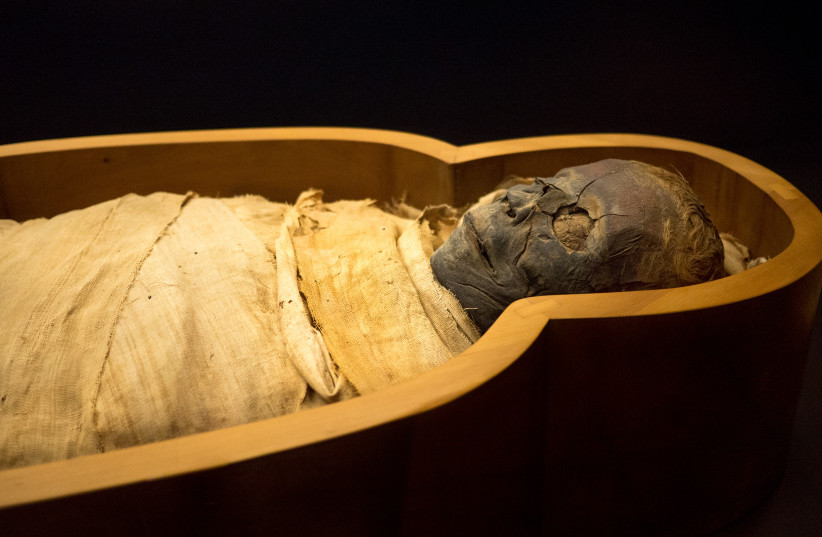Archaeologists discovered ancient Egyptian mummies with golden tongues, the Egyptian Ministry of Tourism and Antiquities announced recently.
The mummies were some of the several discoveries found at the Qwaisana Archaeological Compound excavation site in Egypt.
These excavations managed to unearth a number of ancient tombs from different points in Egyptian history.
The golden tongues weren't actual tongues but rather were golden plates in the shape of tongues placed in the mouths of some of the mummies, as explained by Supreme Council for Archaeology secretary-general Dr. Mustafa Waziri. In other words, these mummies had their tongues removed during the mummification process and replaced with these golden tongues.
Overall, the mummies recently found were preserved rather poorly, but a considerable amount of gold was found throughout the tombs. Some of the mummies, Waziri explained, were covered in thin layers of gold, and others even had gold bound to their bones.

There were also other golden artifacts buried alongside several of the mummies.
Why did Egyptian mummies have golden tongues?
Why these tongues were replaced with gold isn't clear, though some reports have claimed that the archaeologists believe it was to allow the deceased to be able to speak before the Egyptian god Osiris, judge of the dead, to ask for mercy.
There is some precedence for this, too. While golden tongues aren't seen everywhere, they have been found in some mummies before, and archaeologists at the time also thought that it could be to allow them to speak to Osiris.
This is also in line with recent research that debunked misconceptions about the use of salt in the mummification process. Scientists found the salt wasn't in order to preserve the bodies, as most people have long thought since the Victorian era. Rather, researchers from the Manchester Museum at the UK's University of Manchester said it was in order to secure a clearer path to the divine for the deceased.
Ancient Egypt used a salty substance that differed from salt itself. They used natron, a naturally occurring mineral (a blend of sodium carbonate, sodium bicarbonate, sodium chloride and sodium sulfate). This substance was found in excess on the beds of the Nile river and proved to be a vital part of mummification.
These individuals were mummified in order to help them connect to higher powers. They frequently made offerings to the gods while they were living, so making offerings with incense for the afterlife would be no different. "We also know that natron was used in temple rituals [and applied to] the statues of gods. It was used for cleansing," Price said. Similarly, incense played a major role in prayer rituals for both the living and dead.
Mummies were placed in a sarcophagus, which was decorated extensively to portray the likeness of the person buried inside. Though previously believed it was for artistic purposes, researchers now believe that their decorations were meant to help the deceased be recognized on their way to the afterlife.
